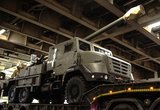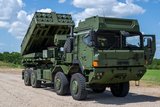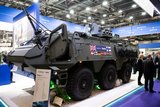BAE submits proposal for MPF programme
BAE Systems has submitted its proposal for the US Army’s Mobile Protected Firepower (MPF) programme, the company announced 1 March.
The MPF vehicle will be used to provide the army’s Infantry Brigade Combat Team (IBCT) with a protected platform capable of delivering precision firepower, combined with the ability to move rapidly in a variety of terrain conditions.
BAE Systems' proposal incorporates an improved M8 Armored Gun System into a fully integrated MPF system. According to the company, the solution provides a highly survivable, lethal, mobile, and transportable vehicle system.
The vehicle is currently going through internal testing. The company will submit the vehicle to the army on 2 April to undergo additional US government testing as a part of the bid assessment process.
Jim Miller, director of business development at BAE Systems’ combat vehicles business, said: ‘Our solution is built around the IBCT’s needs and the evolving threats they face. It is as deployable as the IBCT’s other equipment and is easily sustained and maintained with assets already organic to the IBCT.
‘Our infantry fights in close terrain, urban areas, and remote locations, so a smaller, lightweight vehicle that still provides superior protection and lethality was essential to the design of our MPF offering.’
More from Land Warfare
-
![Lockheed Martin to look further afield for GMARS rocket system opportunities]()
Lockheed Martin to look further afield for GMARS rocket system opportunities
The HX truck is already in use in many NATO and allied countries around the world as a logistics vehicle and carrier for high-value systems, including missile firing weapons, so its use for the Global Mobile Artillery Rocket System makes logistical sense.
-
Medium knocked out of British Army LMP, with CAVS as heavyweight champion
As the British Army seeks to modernise and consolidate its diverse vehicle fleet, yet another change in direction is underway.
-
![Energy evolution: How laser defence systems are powering the next phase of air defence (podcast)]()
Energy evolution: How laser defence systems are powering the next phase of air defence (podcast)
Laser-based air defence is moving from promise to deployment as global threats evolve. In this special podcast, we explore how high-energy laser systems are reshaping interception strategies.
























